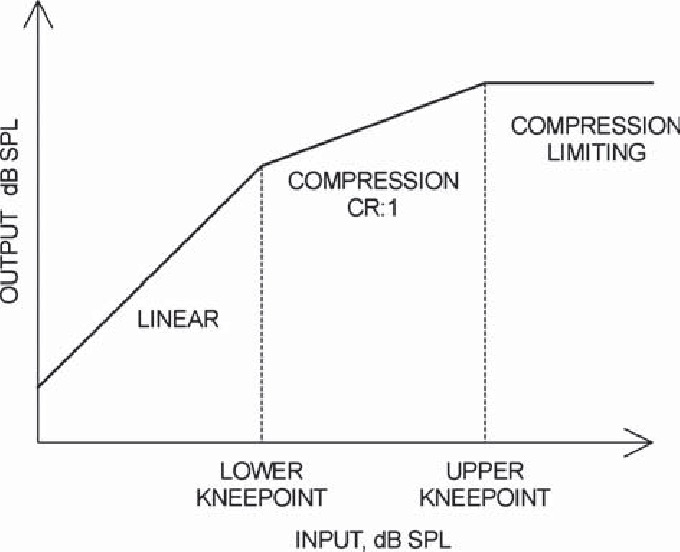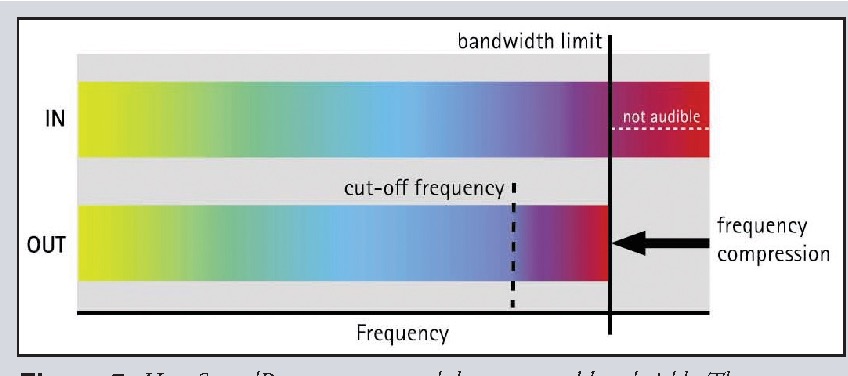### "Will, you're always so worried about noise, it's not that bad" - "... and why do you keep making fun of Javier's?" --- ### Greetings from [Javier's](https://www.javiers-cantina.com/la-jolla)! <img class="r-stretch" src="hearing/javiers_entrance.jpg"> --- ### 93 dB average, 109dB Max, on a Monday night! <img class="r-stretch" src="hearing/javiers_db.jpg"> --- ### After an 8 hour shift there, you're gonna need... --- # Hearing Aids ### Will Styler - LIGN 113 --- ### A Note on SET --- ### Today's Plan - What does a hearing aid do? - Signal Processing in Hearing Aids - Hearing aid types - Hearing aid fitting - When don't hearing aids work? - Addressing lingering questions from the course so far --- ### Hearing Aids have a long history - [This video from Adam Savage goes deep into it](https://www.youtube.com/watch?v=T2Ba9bSxsYI) --- ## What does a hearing aid do? --- ### Hearing Aids amplify the input signal! - It can be uniform throughout the frequency domain, or targeted - A microphone picks up on the signal - It's converted to digital form and processed - It's played back into the ear canal in louder (potentially modified) form --- ### Hearing Aids turn incoming acoustic signals into louder acoustic signals - Sometimes with some intermediate processing - ... and everything happens **before** the tympanic membrane --- <img class="r-stretch" src="hearing/hearing_aid_types.jpg"> --- ### Different hearing aid types have different advantages - Cosmetic advantages - In ear vs. Behind Ear vs. In-Canal - This is also a realm for middle-ear implants! - Degree of amplification - BTE is usually able to offer greater amplification than CIC, e.g. - Vulnerability to ear canal change - Kids don't want in-ear aids for changing ears - Do you want any sound to pass through at all? - If you're just amplifying part of the spectrum, let natural hearing work too! --- ### There's a lot more to this choice - ... but your book goes into details! --- ## Signal Processing in Hearing Aids --- ### What kind of signal processing can hearing aids do? - Volume Control - Frequency-specific processing - Modes and programs - Compression of amplitude and frequency - Input filtering - Feedback prevention --- ### Volume Control - Turning up or down your hearing aids is a great idea - This can be a dial, an app, or some other interface --- ### Frequency Specific Processing - If your hearing loss isn't uniform, your amplification doesn't need to be - "Turning up" loss-free frequencies is a dangerous game - This is why 'hearing amplifiers' are not usually a good idea! --- ### Dynamic Range Compression - What's the difference between the highest and lowest frequency they can hear? - This is often impacted with (e.g.) presbycusis - What's the difference between the highest and lowest amplitude they can hear? - This is also often a concern! --- ### We want a large dynamic range - A hearing aid that can't give you both footfalls and shouting is less helpful - Even if you can't hear anything 7,000 Hz, you still want to be able to detect it - We need to *compress* the dynamic range of sounds to fit the dynamic range of patients! --- ### Compression of Amplitude - If a person has a dynamic range from 75dB to 90dB at frequency f... - Let's make the quietest sounds coming into the hearing aid be 75dB and the loudest be 90dB!* - "Rescale the amplitude space" to match their possible range - Even if the true difference was 30dB, present them much closer together. - **This is non-linear!** - It distorts the sounds, but to help the person hear better! ---  --- ### Compression of Frequency - If this person has a range from 80-5000 Hz at *any* amplitude... - **Let's make the top 1000 Hz contain all the other frequencies!** - So, an 8000 Hz sound would be played back at 4400 Hz, and a 10,000Hz sound might be played at 4500Hz - "Rescale the frequency space" to match their possible hearing - This is best when there's complete losses in higher frequencies - **This is non-linear!** ---  --- ### These are substantial distortions! - Hearing aid hearing becomes *very* different from unassisted hearing - ... but we learn to cope, and in the process regain amplitude and frequency range - "Yes, this is weird, but better to get this sound weirdly than not at all!" --- ## Other kinds of signal processing --- ### Modes and Programs - You don't want the same settings for a quiet conversation at home as for a loud restaurant - Birdwatching vs. a sports stadium vs. Javiers at UTC - Different settings allow different combinations of processing - Some hearing aids try to 'learn' the best settings and automatically switch --- ### Input Filtering - Directional microphones to favor some inputs - Noise cancellation to remove ongoing sources of noise - Blocking impulse noise - Removing wind noise - Enhancing speech from the noise background --- ### Feedback prevention - Feedback is when the speaker is picked up by the microphone - Works the same with a hearing aid as with any microphone/speaker setup - Often most problematic when there's little external noise - Hugs, Heads against objects, pillows, etc - "What frequency does the feedback happen at? Notch out that frequency." --- ### Adding additional signals to the mix - FM loop receivers - "Don't pick up on the room audio, tune in to the source you care about!" - Bluetooth connectivity - Often using an external box - Allows integration with phones and computers and cars and... --- ### Hearing aids are amazing! - They're constantly improving too - Better Digital Signal Processing - Better miniaturization - Better battery technology - On-board Recharging - The technology we have now is amazing - ... and I'm excited by what it'll look at by the time I need them! --- ### All of this is personalizable - Which is a big part of... --- ## Fitting Hearing Aids --- ### We're not getting too deep into fitting! - Hearing aid fitting is a whole subdiscipline - There are thousands of variants and types - Every company has their own secret sauces and marketing hype - The products are roughly equivalent in quality within a price range - We're going to talk about the basic concepts - ... and leave the rest to the future! --- ### How are hearing aids fitted? - Check the hearing - Figure out the pain points for the patient - Select the best choice given the constraints - Instruct the patient on their use - Tune them as needed --- ### The focus needs to be on patient outcomes! - If the hearing aid isn't helping where they need help, it's not doing any good! - Good fitting may require multiple tuning sessions - Adjusting frequency responses - Adjusting filtering settings - Adjusting amplification strength - The best hearing aid in the world doesn't do anything on the nightstand! --- ### People are often reluctant to use Hearing Aids - Partly due to stigma - Partly due to poor prior experiences, or family experiences - Partly due to the complexity involved - Often due to cost - Which pushes people towards... --- ## Hearing Amplifiers and PSAPs --- ### Not all 'hearing aids' are hearing aids - There exists a shadowy world of 'hearing amplifiers' or 'personal sound amplification products' (PSAPs) --- <img class="r-stretch" src="hearing/hearing_amplifiers.png"> --- ### These are one-size-fits-all - 'Turn the screw for more volume in all frequencies' - 'Use different tips for different ears' - 'We made an Airpod with a microphone which plays things louder' - Meant to be cheap, not comfortable --- ### This line is about to get blurry - Real Hearing Aids can now be sold Over-The-Counter in the US - No audiologist is needed - Watch for big companies to enter the space with 'smart hearing aids' - Ask how smart they are! - ... and whether they're adapting to the person's hearing loss at all --- <img class="r-stretch" src="hearing/verizon_hearingtech.jpg"> --- ### Challenges for Over-the-Counter Products - Characterizing the level and nature of the hearing loss - Tuning the devices to patient needs - Overamplification - One-size-fits-all form factors - Ongoing support and maintenance - Loss of screening for other disorders - Wax buildup? Choleasteatoma? Acoustic Neuroma? --- ## When *don't* hearing aids work? --- ### Hearing aids offer great outcomes for lots of folks! - Amplification can be a great help for many - Loss of hearing can be very difficult for folks who've always had it! - ... but hearing aids aren't always enough! --- ### Even when they work, it's not perfect hearing! - With loss of OHCs, the sound may be perceptible, but it won't be as clean! - Frequency specificity is lost - "Notched" loss, where some frequencies are missing, won't be fixed here - Dynamic range losses mean that distortion is inevitable - **Take care of your ears! Technology cannot save you!** --- ### Hearing Aids make use of the existing auditory physiology - "Let's make sounds loud enough that they'll pick it up!" --- ### Hearing aids don't work with profound conductive loss - Then you'll want to use bone conduction - Bone conduction Hearing aids - Bone anchored implants - Or maybe a middle-ear implant! - Which interfaces directly with the ossicles --- ### None of these options work when there's no cochlear transduction - If the person can't turn sound into nerve impulses, amplification isn't the problem! - This can also happen if the loss is so profound that sufficient amplification isn't possible - In these cases, patients might consider a surgical option --- ## Lingering Questions? Muddy points? --- ### Wrapping up - Hearing aids amplify signals moving into the middle ear - They have many different kinds of on-board processing - They can also incorporate other sources of sound - Different form factors make for different experiences - Fitting is complicated - Hearing aids don't always work! --- ### Next Time The surgical option! --- <huge>Thank you!</huge>